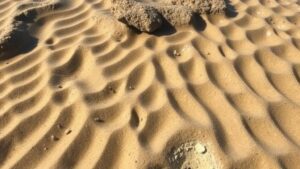Detecting for Artifacts in Coastal Rock Pools After Low Tides
Detecting for Artifacts in Coastal Rock Pools After Low Tides
Coastal rock pools, often neglected in archaeological studies, are rich sites for the discovery of artifacts and biological specimens. These tidal zones, unique in their ecological characteristics, provide a window into human activity, past environmental conditions, and biological diversity. This article will explore techniques for detecting artifacts in coastal rock pools during low tides, examining both historical and contemporary methodologies, their implications, and case studies that highlight their significance.
The Importance of Coastal Rock Pools
Coastal rock pools serve as miniature ecosystems where fresh and saltwater mix, creating unique habitats for various marine species. e areas are crucial not only for biodiversity but also for understanding human interaction with coastal environments. The preservation of artifacts within these pools can provide insights into ancient cultures, trade routes, and environmental changes.
Methods for Artifact Detection
Detecting artifacts in coastal rock pools requires a nuanced approach that combines archaeological techniques, environmental science, and technology. The following strategies are commonly employed:
- Visual Inspection: This method involves thorough examination of the pool’s surface and substrate, looking for materials such as ceramics, metal, and glass. It is often useful to search after significant storm events when sediment may be displaced.
- Water Sampling: Collecting water and sediment samples can reveal micro-artifacts and biological markers. Analysis of these samples can help identify human presence and activity.
- Geophysical Survey: Techniques such as ground-penetrating radar (GPR) or electrical resistivity tomography can be applied to detect buried artifacts, especially in deeper rock pools where visual inspection is limited.
Challenges in Detecting Artifacts
Detecting artifacts in coastal rock pools presents a unique set of challenges:
- Environmental Factors: The dynamic nature of coastal environments means that changes in tide and weather can quickly alter the layout of rock pools, potentially obscuring artifacts.
- Visibility Issues: Algal growth, sediment, and murky water can limit visibility, making it difficult to spot artifacts without the aid of technology.
- Legal and Ethical Considerations: Archaeological excavations often require permits and adherence to local conservation laws, particularly in ecologically sensitive areas.
Case Studies and Real-World Applications
Several notable studies highlight successful artifact detection in coastal rock pools:
- The Antikythera Shipwreck: Discovered off the coast of Greece, this site has yielded artifacts from ancient shipwrecks preserved in underwater rock pools. The methodologies employed included both visual searches and advanced underwater scanning technologies.
- Coastal Indigenous Sites in Australia: Aboriginal Australians have utilized coastal rock pools for thousands of years. Archaeological surveys in these regions have uncovered stone tools and other artifacts, providing significant insights into the progenitors lifestyle and environment.
Actionable Takeaways
For researchers and enthusiasts looking to explore the potential of coastal rock pools, consider the following actionable steps:
- Use a combination of techniques: Employ both visual inspection and technology-based methods for comprehensive detection.
- Collaborate with local experts and archaeologists: Engaging with those familiar with both the ecological and historical aspects can enhance the quality of the findings.
- Stay informed about local regulations: Understanding the legalities surrounding artifact recovery is critical to responsible exploration.
Conclusion
Coastal rock pools are dynamic environments that offer a unique laboratory for studying artifacts and biodiversity. By employing a variety of detection methods and addressing logistical challenges, researchers can uncover valuable insights into past human activities and interactions with the environment. As we continue to explore these magical ecosystems, we can look forward to discovering more about our shared history and the intricate web of life within these coastal zones.



